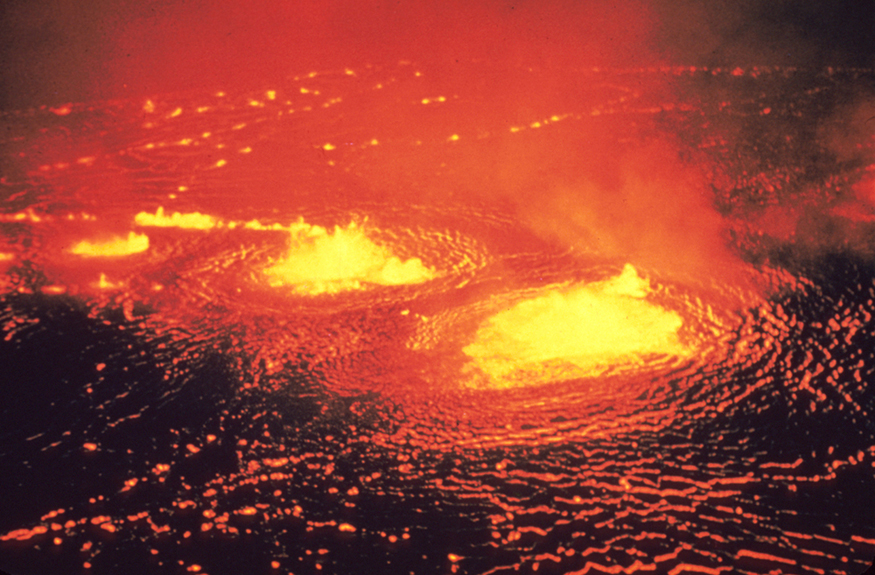| << Chapter < Page | Chapter >> Page > |
The movement of icebergs is another example of convection accompanied by a phase change. Suppose an iceberg drifts from Greenland into warmer Atlantic waters. Heat is removed from the warm ocean water when the ice melts and heat is released to the land mass when the iceberg forms on Greenland.
Explain why using a fan in the summer feels refreshing!
Using a fan increases the flow of air: warm air near your body is replaced by cooler air from elsewhere. Convection increases the rate of heat transfer so that moving air “feels” cooler than still air.
Under which two conditions would convection in a fluid be greatest?
(a)
Sea breezes occur along coastlines, and consist of cool air moving toward the shore from the ocean. However, this only occurs during the day, and is a stronger effect when the air temperature on the land is greatest and the air temperature above the water is coldest. At night, the breezes are reversed, moving from the land toward the ocean. Taking into consideration the specific heat capacities of water and sand (which is about the same as that of concrete), explain how sea breezes form during the day and change direction at night.
One way to make a fireplace more energy efficient is to have an external air supply for the combustion of its fuel. Another is to have room air circulate around the outside of the fire box and back into the room. Detail the methods of heat transfer involved in each.
On cold, clear nights horses will sleep under the cover of large trees. How does this help them keep warm?
At what wind speed does air cause the same chill factor as still air at ?
10 m/s
At what temperature does still air cause the same chill factor as air moving at 15 m/s?
The “steam” above a freshly made cup of instant coffee is really water vapor droplets condensing after evaporating from the hot coffee. What is the final temperature of 250 g of hot coffee initially at if 2.00 g evaporates from it? The coffee is in a Styrofoam cup, so other methods of heat transfer can be neglected.
(a) How many kilograms of water must evaporate from a 60.0-kg woman to lower her body temperature by ?
(b) Is this a reasonable amount of water to evaporate in the form of perspiration, assuming the relative humidity of the surrounding air is low?
On a hot dry day, evaporation from a lake has just enough heat transfer to balance the of incoming heat from the Sun. What mass of water evaporates in 1.00 h from each square meter? Explicitly show how you follow the steps in the [link] .
1.48 kg
One winter day, the climate control system of a large university classroom building malfunctions. As a result, of excess cold air is brought in each minute. At what rate in kilowatts must heat transfer occur to warm this air by (that is, to bring the air to room temperature)?
The Kilauea volcano in Hawaii is the world’s most active, disgorging about of lava per day. What is the rate of heat transfer out of Earth by convection if this lava has a density of and eventually cools to ? Assume that the specific heat of lava is the same as that of granite.

During heavy exercise, the body pumps 2.00 L of blood per minute to the surface, where it is cooled by . What is the rate of heat transfer from this forced convection alone, assuming blood has the same specific heat as water and its density is ?
A person inhales and exhales 2.00 L of air, evaporating of water from the lungs and breathing passages with each breath.
(a) How much heat transfer occurs due to evaporation in each breath?
(b) What is the rate of heat transfer in watts if the person is breathing at a moderate rate of 18.0 breaths per minute?
(c) If the inhaled air had a temperature of , what is the rate of heat transfer for warming the air?
(d) Discuss the total rate of heat transfer as it relates to typical metabolic rates. Will this breathing be a major form of heat transfer for this person?
(a) 97.2 J
(b) 29.2 W
(c) 9.49 W
(d) The total rate of heat loss would be . While sleeping, our body consumes 83 W of power, while sitting it consumes 120 to 210 W. Therefore, the total rate of heat loss from breathing will not be a major form of heat loss for this person.
A glass coffee pot has a circular bottom with a 9.00-cm diameter in contact with a heating element that keeps the coffee warm with a continuous heat transfer rate of 50.0 W
(a) What is the temperature of the bottom of the pot, if it is 3.00 mm thick and the inside temperature is ?
(b) If the temperature of the coffee remains constant and all of the heat transfer is removed by evaporation, how many grams per minute evaporate? Take the heat of vaporization to be 2340 kJ/kg.

Notification Switch
Would you like to follow the 'College physics for ap® courses' conversation and receive update notifications?